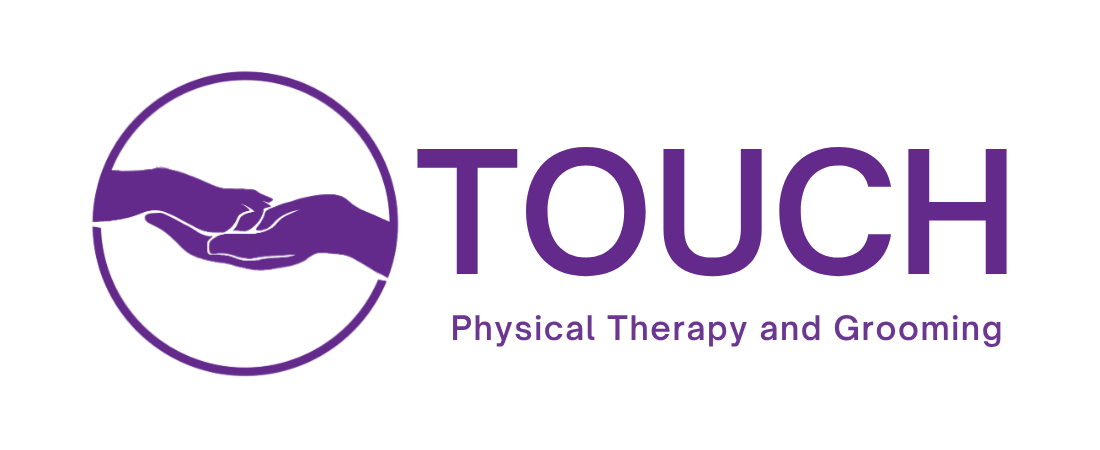An ounce of prevention can lead to a long happy life.
Making some simple changes to your routine before you head out on that RUN or HIKE with your pet can go a long way in ensuring a comfortable and long life.
Dogs are not any different than humans in that they need their muscles cared for before and after exercise. A human that exercises will often do a series of ballistic stretches before they head out for their run or begin lifting weights and they will do so some static stretches following their exercises. Some athletes even get regular massage treatments to maintain muscle health and flexibility.
Why is muscle health important?
We all know that the larger muscles groups such as the hamstrings provide us with strength, but there are so many other important features of muscle involvement in bodily movements that get overlooked. Muscles are an important component of stability and balance because they have receptors in them that allow communication with the brain about positioning of the limbs and reaction to movement. More importantly, muscles, tendon and ligaments provide joint stability and can directly affect joint motion.
Preparing your dogs body for exercise isn’t as daunting as it sounds and can be done in a matter of a couple of minutes. It can be fun and engaging, which will make it seem less like work.
To prepare the muscles to exercise we need to start increasing blood supply to them and stimulating the movement of the muscles. Ballistic stretching in people is a series of fast paced movements like swing the arms and arm rotations, jumping up and down and shaking out the body. These movements can be done in dogs too, just slightly different. In our dogs we perform a series of low dynamic movements that will get the muscles and joints moving, increase the blood supply to the muscles and prepare the body for exercise.
How do we warm up our dogs before hitting the trails?
We can start with give their large muscles groups a vigorous rub with the palm of our hands. Moving over the neck, down the back, and over the limbs. If they have a tail move over the bum and down the length of the tail. After this let’s do a couple fun movements to increase the bold flow and stimulate the movement of the joints preparing the ligaments and tendons. Move your dog through a series of the following exercises, repeating them 4-5 times each, and then hit the trail.
Stand to down to stand
Sit to stand
Circle left
Circle right
Bow to stretch out the hips and back
Take a couple steps backwards
After doing these the ligaments and tendons should be ready to stabilize those joints for movement such as jumping, twisting, turning, swimming, and running.
Let’s go back to the human athlete and how they cool down after a run. They will slow their pace down to a walk to slow the heart rate and decrease the blood volume moving through the body. They may start doing a few easy stretches as they walk of their arms and legs. Once their heart rate has reduced, they will take a few minutes to do some static stretches of their quads, hamstrings, calf muscles, back and adductor muscles.
Let’s apply this to our dog!
At the end of your adventure, whether it’s a hike or a jog or a run in the agility ring take a few minutes to do a few muscle stretches. Stretching the muscles when they are cooling down is equally as important because it will prevent shortening of the muscles. Muscles over time if they are not stretched will continue to get tighter and shorter. We can all probably appreciate what I am saying here. If we allow these muscles to get tight, they become painful and that will begin to alter their gait. If we allow them to shorten, then we can have significant changes in the quality of the muscle and how the body responds to movement.
Here are a couple movements that you can do with your dog to stretch them out after their exercise.
Step stretch – find a rock or a stump or your staircase and elevate their front feet to elbow height and hold that position for 25 seconds.
Walking backwards – taking 8 – 10 steps backwards will give the hip flexors like the iliopsoas muscles a nice stretch (these are the muscles that are the most effected by not stretching)
Taking a bow position will stretch through the back and the hamstring muscles as well as through the shoulder and triceps muscles.
A series of range of motion movements through each joint will stretch out the ligaments and tendons.
What happens if we don’t stretch our dogs after exercise?
Over time, if the muscles ARE NOT stretched there can be some detrimental consequences in the health of the muscles and subsequently PAIN. The first thing we would start to notice is that there will be stiffness in their movement, particularity after a period of rest. They will begin to alter their gait to accommodate for the discomfort they feel during a NORMAL stride, there will be the development of lameness and offloading resulting in compensation. These areas of compensation will then become painful further increasing stiffness and altering their gait and affecting their overall mobility.
Prevention and early intervention are the key to maintaining flexibility in muscles and this will lead to longevity in your pets life.
Subscribe to our YouTube channel for more helpful videos for your dogs well being.

